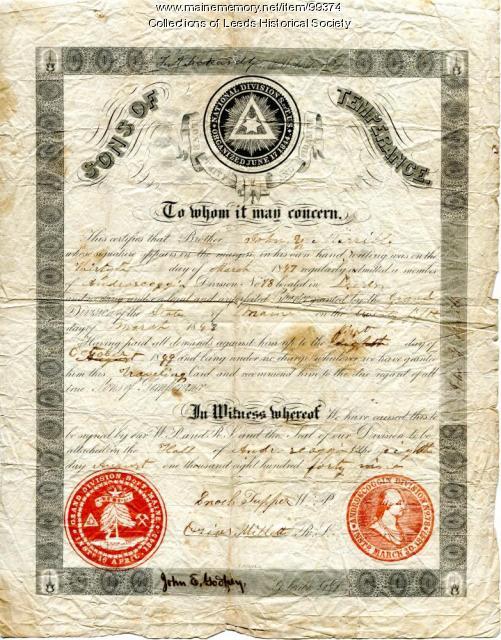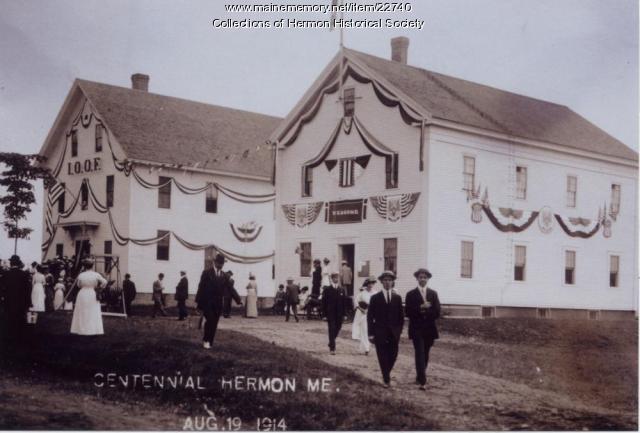Keywords: Temperance
Item 99374
Sons of Temperance certificate, Leeds, 1847
Contributed by: Leeds Historical Society Date: 1847-03-30 Location: Leeds Media: Ink (printer and pen) on paper
Item 15764
Hampden Youth Temperance Society Constitution, 1839
Contributed by: Maine Historical Society Date: 1839 Location: Hampden Media: Ink on paper
Item 52896
148-150 Free Street, Portland, 1924
Owner in 1924: Maine Woman's Christian Temperance Union Use: Rooming House
Exhibit
Prohibition in Maine in the 1920s
Federal Prohibition took hold of America in 1920 with the passing of the Volstead Act that banned the sale and consumption of all alcohol in the US. However, Maine had the Temperance movement long before anyone was prohibited from taking part in one of America's most popular past times. Starting in 1851, the struggles between the "drys" and the "wets" of Maine lasted for 82 years, a period of time that was everything but dry and rife with nothing but illegal activity.
Exhibit
Several Mainers have run for president or vice president, a number of presidents, past presidents, and future presidents have had ties to the state or visited here, and, during campaign season, many presidential candidates and their family members have brought their campaigns to Maine.
Site Page
Rum, Riot, and Reform - Temperance Membership
"GALLERIES: A Call to Temperance | Temperance Membership | Neal Dow | Drinking: Elegance and Debauchery"
Site Page
Rum, Riot, and Reform - Women Leaders and Temperance
"20, 1898." X National Womans Christian Temperance Union School Reports ca. 1910-1920 Collections of Maine Historical Society; gift of…"
Story
Father Renald Labarre: the life of a Catholic priest
by Biddeford Cultural & Heritage Center
A Biddeford native provides insights on his Franco-American roots and life as a Catholic priest.
Lesson Plan
Primary Sources: Maine Women's Causes and Influence before 1920
Grade Level: 6-8
Content Area: Social Studies
This lesson plan will give students the opportunity to read and analyze letters, literature, and other primary documents and articles of material culture from the MHS collections relating to the women of Maine between the end of the Revolutionary War through the national vote for women’s suffrage in 1920. Students will discuss issues including war relief (Civil War and World War I), suffrage, abolition, and temperance, and how the women of Maine mobilized for or in some cases helped to lead these movements.
Lesson Plan
Building Community/Community Buildings
Grade Level: 6-8
Content Area: Social Studies
Where do people gather? What defines a community? What buildings allow people to congregate to celebrate, learn, debate, vote, and take part in all manner of community activities? Students will evaluate images and primary documents from throughout Maine’s history, and look at some of Maine’s earliest gathering spaces and organizations, and how many communities established themselves around certain types of buildings. Students will make connections between the community buildings of the past and the ways we express identity and create communities today.














